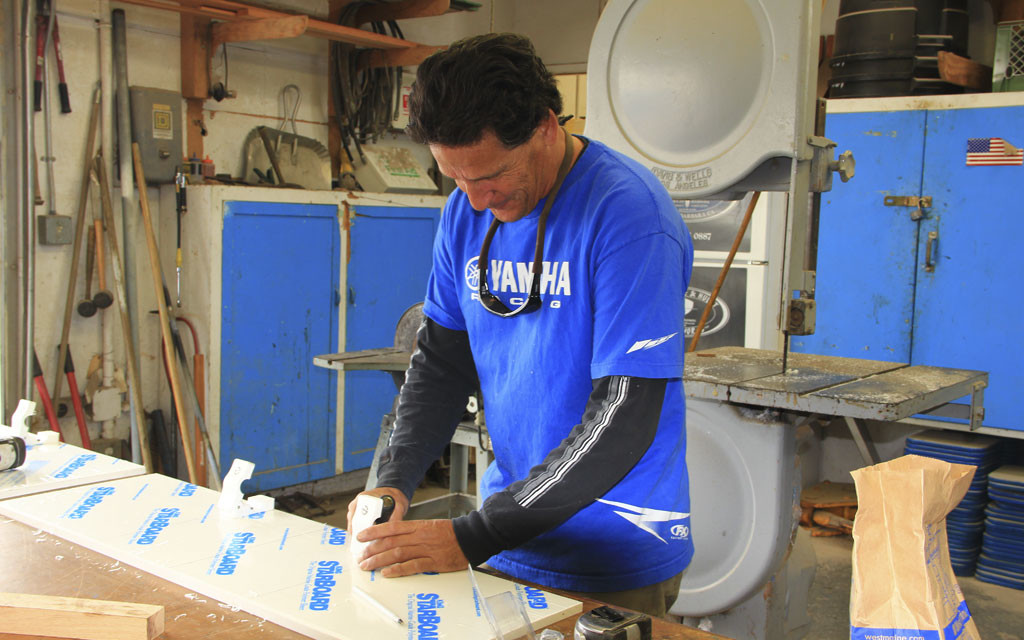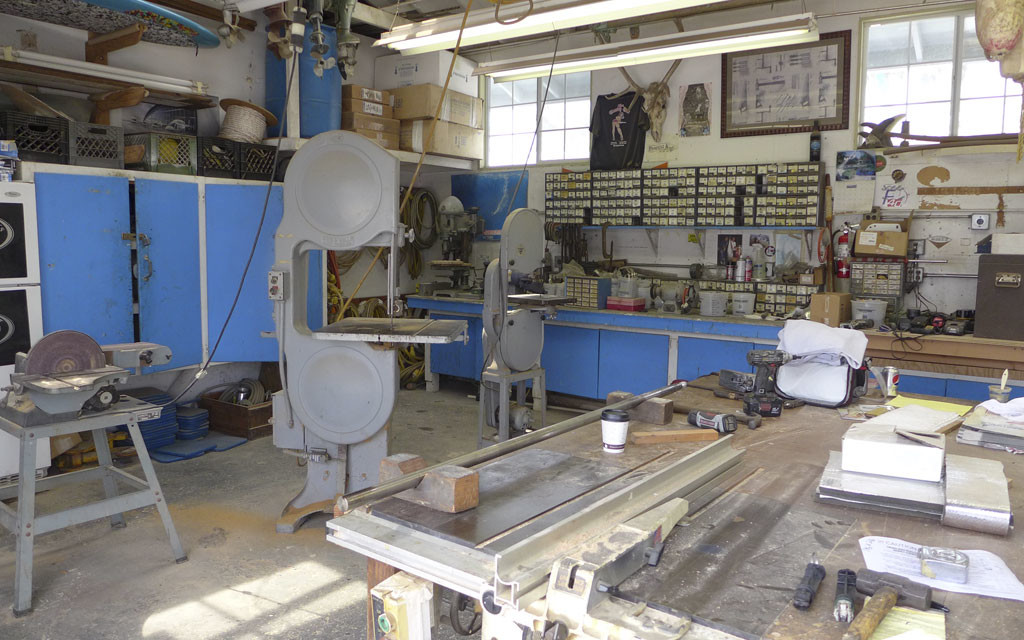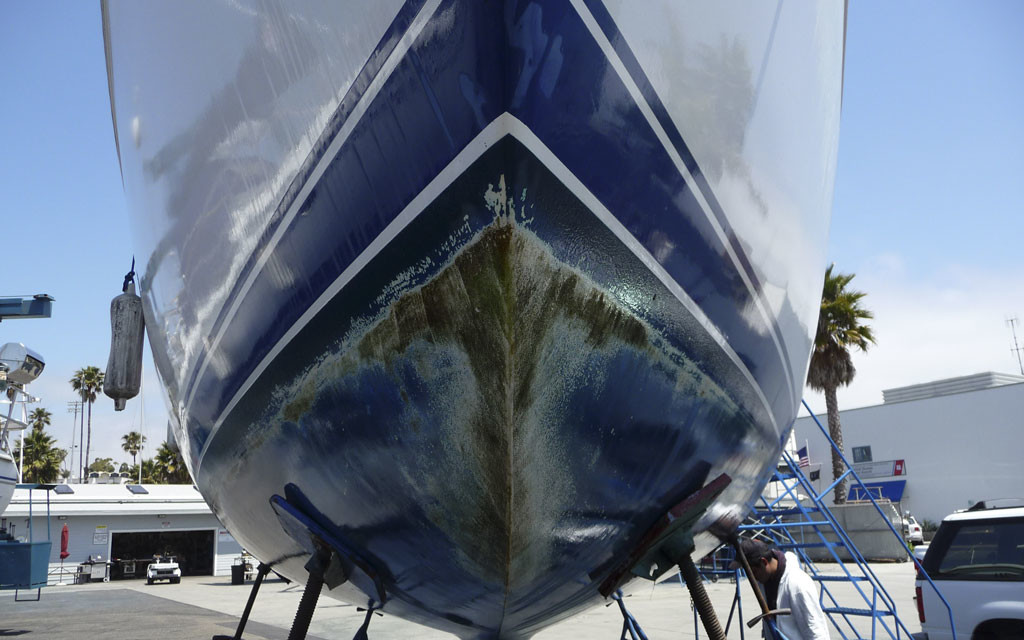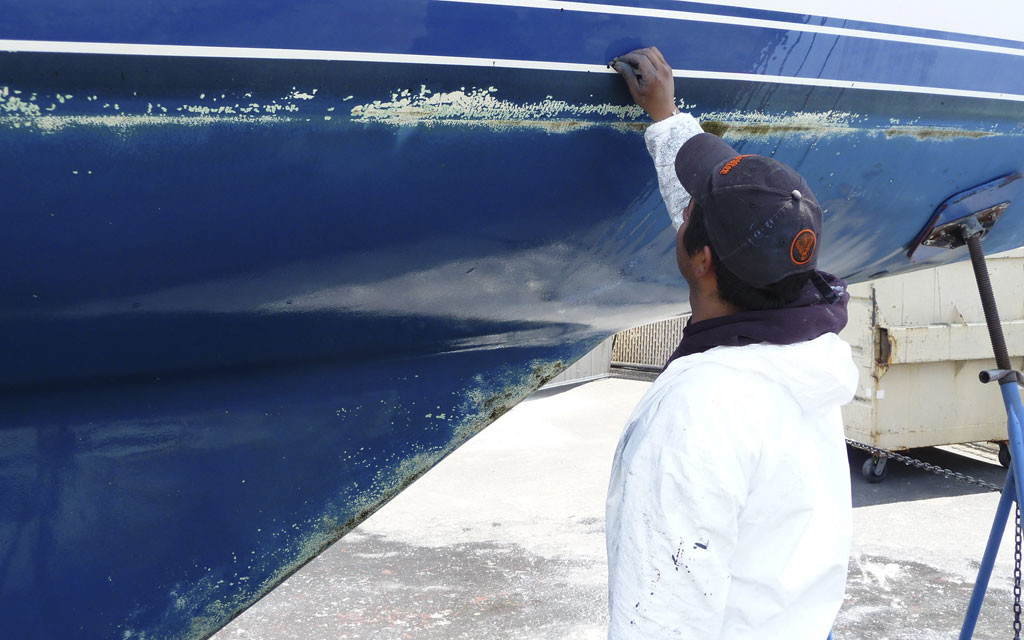Harbor Marineworks is known throughout the industry for the finest quality in fiberglass and woodwork, design, fabrication and restoration. From complex construction to interior trim, we have the knowhow and man power to perfect your project. Our staff is well versed in polyester, epoxy and vinyl ester resin technology.

We do a lot of polyester work as well as a lot of epoxy work so depending on your situation we can work with either with expertise. We use West System Epoxy products.
We do everything from fuel tanks to transoms to large modifications like cockpit extensions or transom doors.
We make molds to make different parts and mounting shims.. We rebuild rudders, split the casing and refoam it.
We have a designated fiberglass shop here at HMW to handle any of your needs.
We offer all levels of osmotic blister treatment, from an individual spot repair to complete bottom peeling and resurfacing. We can customize a treatment approach based upon your budget and blister condition. We are equipped with state of the art moisture detection and metering equipment, and epoxy technology. We deal with the blisters depending on the severity of what it is doing to the boat.
What creates an osmotic blister is salt water getting into the resin base. It goes through the bottom paint, gets into the fiberglass, reacts to the resin and creates a kind of jelly/acidy solution that foams and corrodes. It then bubbles the gelcoat up away from the boat and forms a blister and starts to damage the fiberglass.
When most production boats are constructed, gelcoat (pigmented polyester resin) is sprayed into the bottom of the boat mold, then a chopper gun fires out fiberglass and a resin mixture which goes on top of the gelcoat. Before this sets, the structural laminate which is a mat roving combination is hand laid in the bottom of the mold. The chopper layer on the outside is what protects the structural laminate.
If the blister is just in that chopper gun layer of fiberglass, it is usually a simple grind out spot treatment type of approach. We can grind them out, dry them out, solvent bathe them and get all the moisture out and repair the damage.
If the blister is deeper and the water goes beyond that into the structural laminate roving material, then the water can travel much easier since it travels down the strands of material as opposed to getting to the end of the chopped up layer. This can cause more structural damage to the boat.




